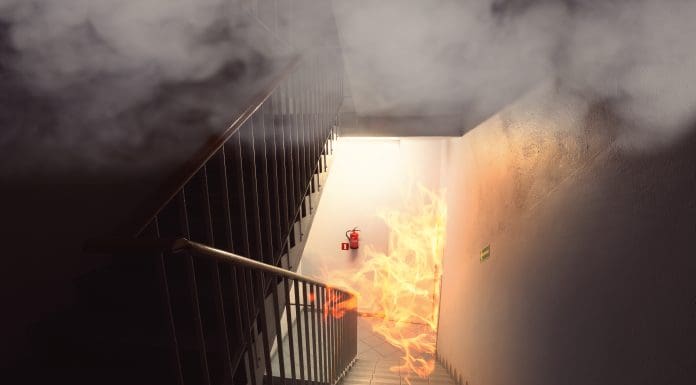
A look at how modern construction practices, evolving fire risks and layered fire safety systems shape the resilience of today’s buildings
Looking at newer commercial and industrial buildings today, it’s easy to be impressed. These buildings are smarter and more energy-efficient, with rooftop gardens, attractive facades and many sustainable innovations incorporated throughout.
These elements aren’t just for aesthetic purposes. Many smart buildings are designed, in part, to meet ambitious sustainability targets — appropriate, given that the UN’s Global Status Report for Buildings and Construction found that buildings consume 32% of the world’s energy supply and contribute 34% of total global CO₂ emissions.
New technologies, eco-friendly construction materials and the proliferation of lithium-ion batteries in devices are helping to lower the environmental impact of the built environment but they are also introducing new fire hazards and different safety risks than we’ve seen in past decades.
This reality raises important questions: How can vulnerabilities in modern commercial buildings be mitigated? What are the implications for owners, tenants and regulators? And what can be done to prevent fires in these new or renovated structures?
Exploring these risks shows why integrated, well-tested fire safety systems are essential to protecting lives, limiting property damage and maintaining normal operations. To see why safety must be the foundation of every smart building, it helps to first understand the widespread threat of fire throughout our buildings and spaces.
Fire risk across the built environment
According to the National Fire Protection Association (NFPA), more than 18,000 commercial fires occur each year, causing over $2bn in damage across sectors like manufacturing, industrial, healthcare and education. But these fires do more than destroy property — they disrupt operations, displace tenants, cause legal and regulatory challenges, and, in the worst cases, cost lives.
Modern construction and materials only heighten the challenge, as verified by a series of research experiments conducted in UL Solutions’ fire laboratories by the Fire Safety Research Institute (FSRI). These experiments involved a side-by-side burn comparison of a room with natural furnishings, such as cotton and wood, versus a room with synthetic furnishings, such as polyester and polyurethane foam.
The natural room took more than 30 minutes to transition to flashover — the period from ignition to the moment when a room erupts in flame — while flashover occurred in just 4 minutes and 50 seconds in the synthetic room. That’s alarming, especially given that the experiments mimicked the effects of common ignition sources, such as lit cigarettes or a small battery-powered device being charged inappropriately.
Active and passive fire safety systems
Protecting built environments today requires a layered approach of both active and passive fire safety methods. Active systems like sprinklers, alarms and extinguishers are what typically come to mind when we think of “fire safety”. These systems detect fire characteristics and suppress flames loudly and effectively to mitigate the fire. NFPA data
shows that in the 92% of structure fires where sprinklers were present, they activated as intended and successfully controlled nearly all of them.
Passive systems, on the other hand — fire-rated walls and floors, facades, roofs, doors and ductwork — are built into a structure to slow the spread of fire.
These systems require little maintenance and are increasingly manufactured with new materials like recyclable insulation to reduce harmful chemicals.
But most importantly, passive systems help delay the spread of fire, compartmentalise fires to the rooms of origin and preserve escape routes, which is vital in today’s commercial buildings.
This is why a comprehensive fire protection approach combining active and passive systems is essential. Rigorous regulations, codes and safety standards are also key to driving comprehensive fire-protection approaches.
Embedding safety into design
Lithium-ion batteries, smart building technology, A2L refrigerants found in modern air conditioning systems and sustainable building materials are all exciting innovations with positive impacts on environmental footprints, but they also pose new challenges.
Every facility — homes, hospitals, schools, office towers, industrial sites and so on — has unique risks, and safety strategies must reflect those realities. Early conversations about safety informed by research and regulations ensure that active and passive measures work with a building layout, construction materials and intended use.
As built environments continue to evolve and become more automated and sustainable, testing will play a leading role. Industry investments such as the UL Solutions Global Fire Safety Center of Excellence, slated to open in 2027, are expanding the capacity to rigorously evaluate new fire suppression methods, keeping pace with how buildings continue to evolve.
Ultimately, embedding safety into design is about aligning innovation with resilience. Buildings can be smarter, more open and efficient, but not without being safety-tested,
integrated and reliable. Doing so ensures that safety remains the foundation of smart buildings, not a trade-off.
The post Fire safety systems as the foundation of sustainable commercial buildings appeared first on Planning, Building & Construction Today.

